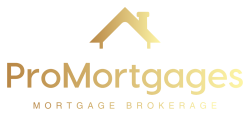Congratulations! You’ve navigated the exciting (and sometimes stressful) journey of buying a home in Canada. Now you’re a proud homeowner, ready to settle in and create lasting memories. But before you unpack those boxes and get too comfortable, it’s crucial to consider home insurance. While it might not be legally mandatory in every situation, here’s why having a home insurance policy is a wise and necessary step for most Canadian homeowners.
Demystifying the Myth: Home Insurance Isn’t Legally Required (For Most)
Unlike car insurance, which is mandatory by law in Canada, home insurance doesn’t fall under the same umbrella. This means that for fully-owned homes with no mortgage, there’s no legal requirement to purchase home insurance. However, this doesn’t paint the whole picture. Here’s why most homeowners, even those without mortgages, choose to get insured:
- Financial Protection: Your home is likely your most valuable asset. In the event of a fire, flood, theft, or other covered perils, home insurance steps in to cover the cost of repairs, replacements, and even temporary living arrangements if your home becomes uninhabitable. Facing these expenses without insurance could be financially devastating.
- Peace of Mind: Imagine the stress of dealing with a major disaster at your home, on top of worrying about the hefty costs of repairs or rebuilding. Home insurance offers peace of mind, knowing you’re financially protected against unforeseen circumstances.
- Liability Coverage: Standard home insurance policies also include liability coverage. This protects you if someone gets injured on your property and decides to sue. The legal fees and potential settlements can be significant, and liability coverage can be a lifesaver in such situations.
Exceptions: When Home Insurance Becomes Mandatory
While not universally mandatory, there are situations where home insurance becomes a requirement:
- Mortgaged Homes: Almost all lenders in Canada require homeowners with a mortgage to have home insurance. This protects the lender’s investment in the property. The specific coverage requirements will be outlined in your mortgage agreement.
- Condominiums: Condo corporations typically require residents to have basic coverage for their individual units. This might cover personal belongings and potential interior damage, but the building structure itself is usually covered by a master insurance policy managed by the corporation.
Understanding the Different Types of Home Insurance in Canada
Home insurance isn’t a one-size-fits-all solution. There are different types of policies available, each catering to specific needs. Here’s a breakdown of the two main categories:
- Property Insurance: This covers the physical structure of your home (dwelling) and any attached structures like garages or sheds. The coverage amount typically reflects the replacement value of your home.
- Contents Insurance: This covers your personal belongings within the home, such as furniture, electronics, clothing, and appliances, in case of theft, fire, or other covered perils. The coverage amount is based on the estimated value of your contents.
Additional Coverage Options:
Many insurers offer additional coverage options that can be added to your policy for a customized level of protection. These might include:
- Increased Limits: Standard policies might have limitations on certain categories of belongings, like jewelry or artwork. You can increase these limits for a higher premium.
- Water Damage: Standard policies might not cover all types of water damage. You might want to consider adding specific coverage for overland flooding or sewer backup.
- Earthquake Coverage: Earthquakes are a risk in certain parts of Canada. If you’re in a high-risk zone, consider adding earthquake coverage to your policy.
Navigating the Cost of Home Insurance in Canada
The cost of home insurance in Canada varies depending on several factors, including:
- Location: Homes in areas with higher risks of flooding, fire, or theft will typically have higher premiums.
- Type of Home: Detached homes generally cost more to insure than condos.
- Dwelling Value: The higher the replacement value of your home, the higher the premium.
- Claims History: Having a history of claims can increase your premiums.
- Deductible: Choosing a higher deductible can lower your premium, but you’ll be responsible for a larger amount out of pocket if you need to make a claim.
Saving Money on Home Insurance:
While home insurance is essential, there are ways to keep the cost manageable:
- Shop Around: Compare quotes from different insurance companies to find the best rates.
- Bundle Your Policies: Bundling your home and auto insurance with the same company can often lead to discounts.
- Improve Your Home’s Security: Installing smoke detectors, deadbolts, and alarm systems can demonstrate a lower risk to insurers and potentially earn you a discount.
- Increase Your Deductible: As mentioned earlier, opting for a higher deductible can lower your premium.









 by Bhasha Infotech
by Bhasha Infotech